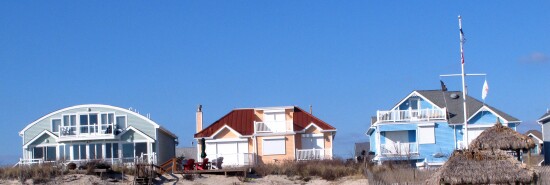
How you paid for that rich person’s beachfront house
Washington Examiner
Video Embed
A $5.5 million waterfront home in Darien, Connecticut, with five bedrooms and a swimming pool seems an unlikely recipient of your tax dollars, but it is. The owners applied for and received a $150,000 grant from the Department of Housing and Urban Development years after they paid for repairs in the wake of Hurricane Sandy.
The Darien home is just one among thousands owned by wealthy people with expensive waterfront properties subsidized by you, the taxpayer.
YEAR THREE OF BIDEN’S BORDER CRISIS WILL BE THE WORST YET
These proprietors are not committing fraud. They are merely taking advantage of programs Congress authorized and federal agencies tweaked to deliver federal largess to people who vote for Democrats.
HUD’s Community Development Block Grant disaster recovery program was for years largely limited to low- and middle-income people. But after Sandy, the Obama administration changed two rules that turned the program into a spigot of cash for coastal elites.
As Thomas Frank has reported, HUD lowered the percentage of money that must go to moderate- and low-income households from 70% to 50%. It also allowed people to apply for reimbursement after repairs were already done. Before this change, few wealthy people would wait around for HUD to approve a grant before fixing their homes. Now they can fix it fast and apply for a taxpayer bailout later. More than $15 billion has flown through the program since Sandy.
The Community Development Block Grant Program is not the only way wealthy people on the coasts are enriched by taxpayers. Frank also reported that the Federal Emergency Management Agency gives wealthy homeowners billions of dollars to elevate their waterfront properties. A typical homeowner can receive up to $550,000 from taxpayers to lift their luxury home from the ground to protect it from flood damage.
FEMA’s buyout program — in which the federal government purchases homes in a flood plain, demolishes the homes, and then leaves the property vacant — used to be the preferred way for the federal government to prevent flood damage. But the Biden administration is pouring billions of dollars into the elevation program, and rich people are cleaning up.
Coastal homeowners already benefit from the federal government’s National Flood Insurance Program, which Congress has bailed out with tens of billions of dollars many times. Congress actually fixed the program in 2012, but after just one year of having to pay market rates, wealthy homeowners lobbied Congress to get their rates lowered again.
In 2018, Sen. Mike Lee (R-UT) tried to limit subsidies to wealthy homeowners by capping the insured value of properties in the program at $2.5 million. The Senate rejected his amendment, for Democrats love giving money to their donors.
Hurricanes are not getting more frequent or stronger despite what many headlines tell you. But the cost of hurricane damage is rising. That is only because we are building more homes and other infrastructure on the coast. Not only are we building more in those areas, but we are also subsidizing rich people to build and rebuild there too.
If we want to reduce damage from hurricanes, we must stop subsidizing expensive homes, which makes Joe Sixpack the financial backstop for the wealthy beneficiaries.
CLICK HERE TO READ MORE FROM THE WASHINGTON EXAMINER
